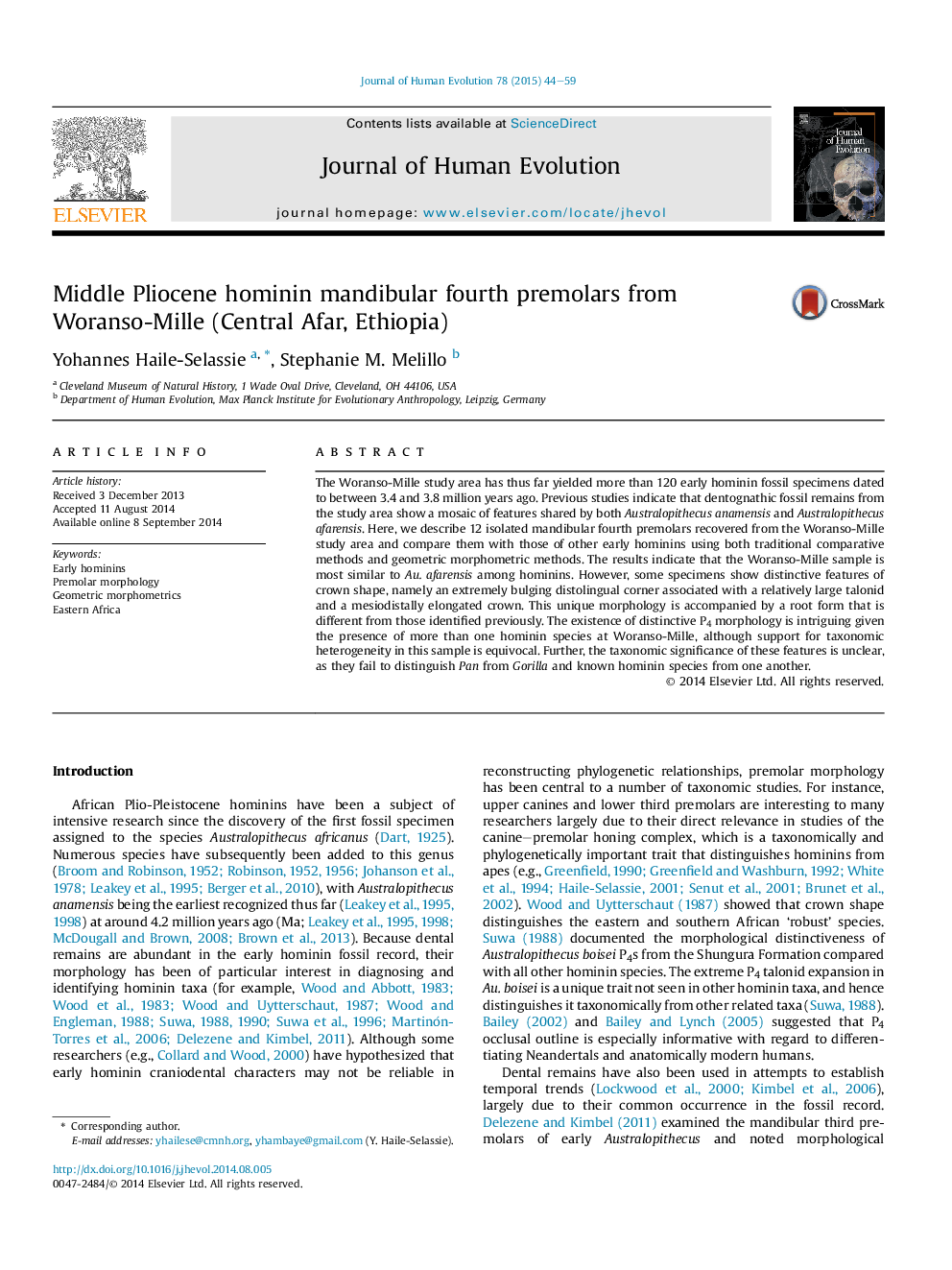| Article ID | Journal | Published Year | Pages | File Type |
|---|---|---|---|---|
| 4556004 | Journal of Human Evolution | 2015 | 16 Pages |
The Woranso-Mille study area has thus far yielded more than 120 early hominin fossil specimens dated to between 3.4 and 3.8 million years ago. Previous studies indicate that dentognathic fossil remains from the study area show a mosaic of features shared by both Australopithecus anamensis and Australopithecus afarensis. Here, we describe 12 isolated mandibular fourth premolars recovered from the Woranso-Mille study area and compare them with those of other early hominins using both traditional comparative methods and geometric morphometric methods. The results indicate that the Woranso-Mille sample is most similar to Au. afarensis among hominins. However, some specimens show distinctive features of crown shape, namely an extremely bulging distolingual corner associated with a relatively large talonid and a mesiodistally elongated crown. This unique morphology is accompanied by a root form that is different from those identified previously. The existence of distinctive P4 morphology is intriguing given the presence of more than one hominin species at Woranso-Mille, although support for taxonomic heterogeneity in this sample is equivocal. Further, the taxonomic significance of these features is unclear, as they fail to distinguish Pan from Gorilla and known hominin species from one another.
